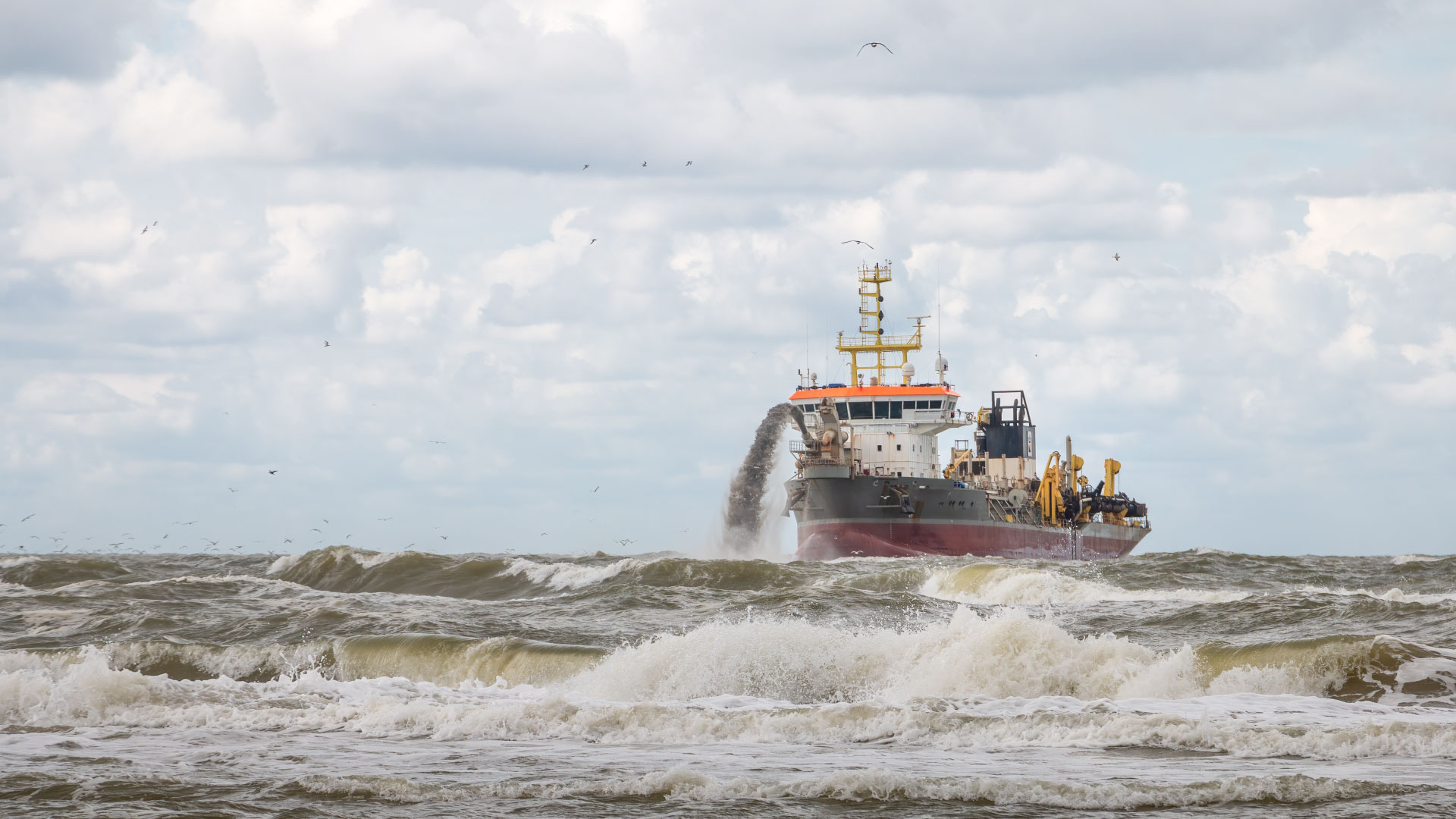The Basics of Dredging and Why It’s Important
Dredging is a vital process in coastal management, addressing challenges from sediment buildup to navigational hazards. It is a key topic for students of environmental science and engineering, as it sheds light on effective ways to protect coastal areas while supporting sustainable development. In this article, we’ll explore the purpose of dredging, its different types, and the many benefits it provides for coastal regions.
Dredging involves removing sediment, debris, and other materials from water bodies to adjust their depth and shape. It serves multiple purposes, such as ensuring navigational safety, improving water flow, and protecting coastlines from erosion. There are three primary types of dredging:
- Hydraulic Dredging: Uses water pressure to pump sediment from the bottom and transport it elsewhere. It is ideal for moving large amounts of material efficiently.
- Mechanical Dredging: Utilizes machinery like clamshell dredgers and backhoes to dig up sediment, which is especially useful for precision projects in smaller areas.
- Environmental Dredging: Focuses on removing contaminated sediments with minimal disruption to the surrounding environment, often applied where toxins are present.
Each type of dredging serves specific purposes, yet all play a role in keeping water systems healthy and functional.
How Dredging Helps Restore Natural Water Flow
Over time, sediment from rivers, streams, and ocean currents accumulates in coastal areas, reducing water movement and depth. This buildup can create a range of issues, from changes in tidal patterns to increased flooding risks. Dredging restores water flow by removing excess sediment, creating deeper channels, and facilitating better water circulation. This improvement in flow is beneficial not only for human needs but also for local ecosystems, which rely on well-oxygenated water and reduced pollutant accumulation. In areas prone to flooding, dredging can reduce overflow risks, providing a valuable buffer for nearby communities.
Ensuring Safe Passage with Dredging
Sediment buildup poses a significant risk to ships and boats, especially in busy ports or coastal areas with high maritime traffic. Reduced water depth can cause vessels to run aground, leading to accidents, delays, and sometimes costly damages. Dredging increases the depth of these waterways, ensuring that commercial and recreational vessels can travel safely and efficiently. This is particularly important in global trade hubs, where the safe passage of cargo is essential for economic stability. For example, ports in Rotterdam and Singapore undertake regular dredging to accommodate heavy maritime traffic, supporting trade and transportation networks worldwide.
Supporting Coastal Infrastructure Stability Through Dredging
Coastal infrastructure, such as docks, seawalls, and bridges, is vulnerable to sediment buildup and erosion. Over time, accumulated debris can weaken these structures, compromising their safety and longevity. Rising sea levels and powerful storms only increase these risks. Dredging helps protect these assets by clearing sediment that can lead to structural damage. Additionally, dredged channels help manage storm surges by allowing water to flow more freely, reducing the strain on coastal defenses. This proactive approach to sediment management helps coastal areas withstand the impact of severe weather and keeps infrastructure secure.
Minimizing Environmental Impacts in Dredging Operations
While dredging provides many benefits, it can also disrupt local ecosystems, displacing marine life and potentially releasing pollutants trapped in the sediment. To reduce these environmental impacts, dredging projects often employ careful methods to minimize harm. Sediment control techniques help contain the spread of sediment to unaffected areas, and environmental monitoring is conducted throughout the project to ensure activities remain within safe limits. Specialized equipment also allows for greater precision, especially in delicate habitats such as wetlands or coral reefs, where even minor disturbances can have lasting effects. These practices allow dredging to continue in a responsible, eco-friendly manner.
Preparing Coastal Areas for Climate Resilience
With the rise in sea levels and the frequency of extreme weather events, coastal areas face increased challenges. Dredging helps communities prepare for these changes by clearing channels, improving drainage, and reducing the impact of storms and high tides. In cities like New Orleans and Miami, large-scale dredging projects are essential to manage stormwater and protect communities from hurricanes. By reducing the pressure on coastal defenses, these dredging efforts support climate resilience and help vulnerable areas adapt to evolving coastal conditions. Such projects are not only preventative but also foundational for future climate adaptation efforts.
Career Opportunities in Coastal Management and Dredging
For students interested in environmental science, marine engineering, or coastal management, dredging offers a range of career paths. From fieldwork as dredging operators to specialized roles in environmental monitoring, dredging-related careers combine technical skills with environmental stewardship. Key skills include understanding marine ecosystems, engineering principles, and environmental regulations. This field offers opportunities for meaningful work that positively impacts both communities and the environment, preparing students for rewarding careers in sustainable coastal management.
Conclusion
Dredging projects play a crucial role in sustaining coastal areas by improving water flow, ensuring navigational safety, and protecting infrastructure. For coastal communities, this practice is essential not only for daily functionality but also for long-term resilience against climate-related threats. Dredging supports the environment, economy, and society, creating a balanced approach to coastal management. For students, understanding dredging opens the door to impactful careers that blend environmental responsibility with technical expertise, ensuring a sustainable future for coastal areas around the world.
